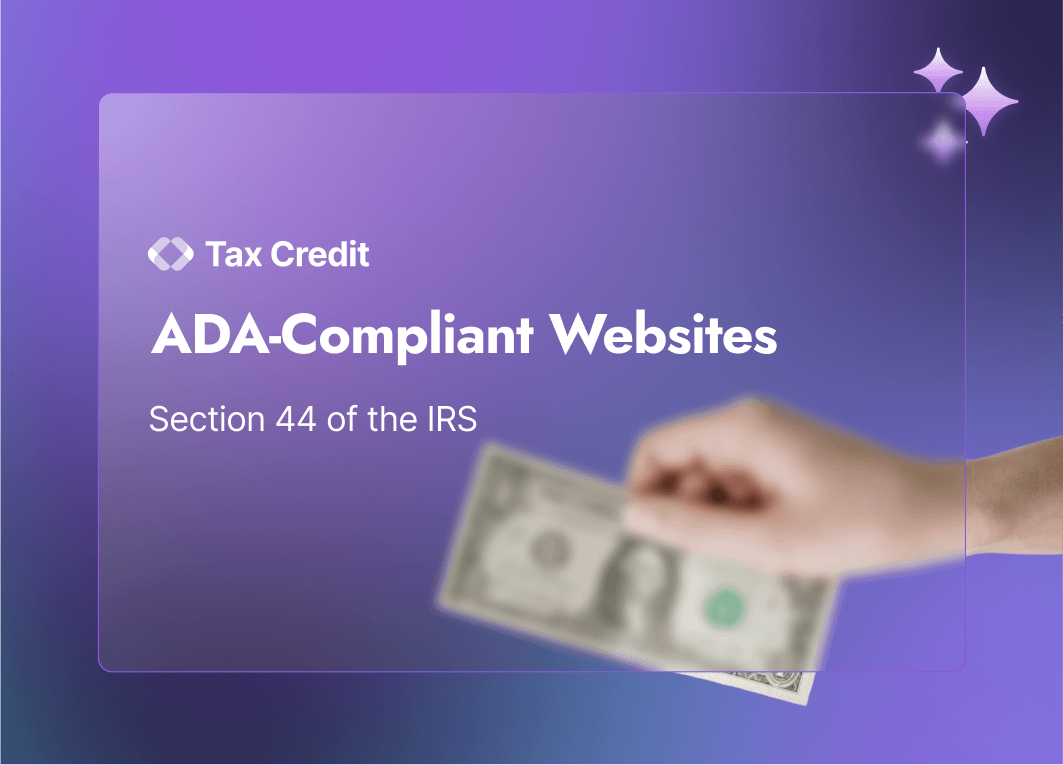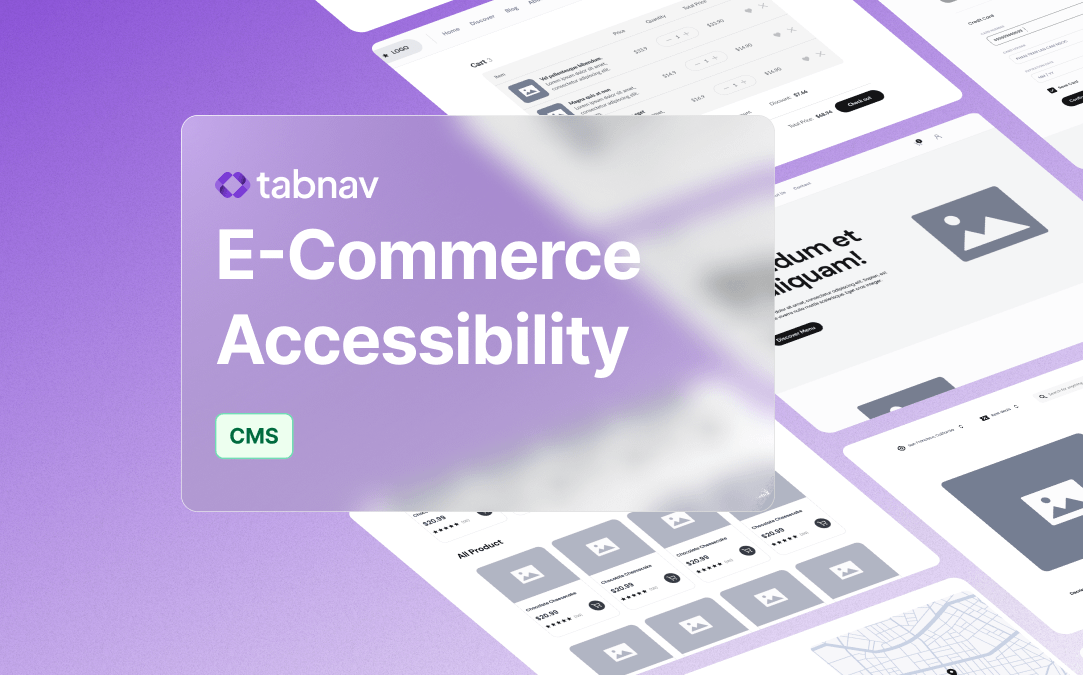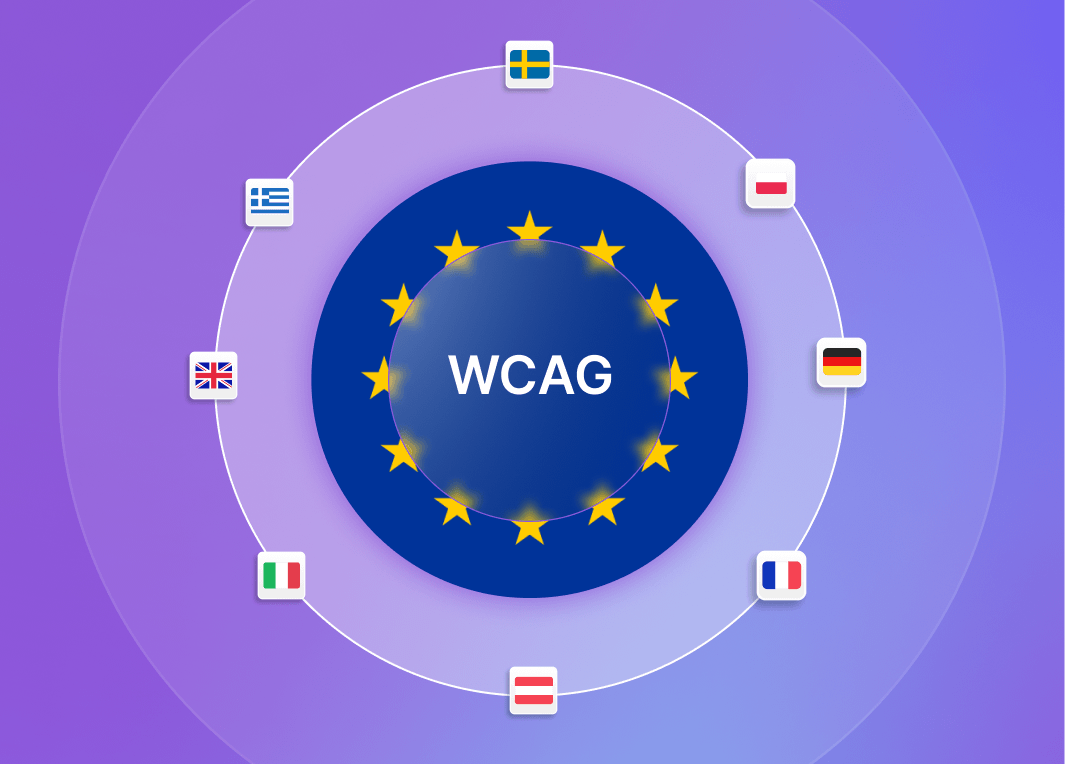Tax Credit for ADA-Compliant Websites
May 12, 2024 - Guides & Resources
Understanding the ADA Tax Credit
The ADA Tax Credit, established under Section 44 of the IRS Code, is a significant incentive designed to support small businesses in their efforts to comply with the Americans with Disabilities Act (ADA). This tax credit is not just a financial perk—it’s a crucial tool for businesses looking to make their digital spaces, including websites, accessible to all users, regardless of their abilities.
In today’s increasingly digital world, where online interactions often serve as the primary point of contact between businesses and their customers, ensuring that your website is accessible is more important than ever. The ADA Tax Credit recognizes the challenges and costs associated with meeting these accessibility standards and offers financial relief to encourage businesses to take the necessary steps.
In this blog, we’ll explore how the ADA Tax Credit can help small businesses offset the costs of making their websites accessible. We’ll cover eligibility criteria, the types of expenses that qualify, and provide step-by-step guidance on how to calculate and claim your credit. By understanding and utilizing this tax credit, you can not only meet legal requirements but also create a more inclusive and user-friendly online experience for all.

Is Your Business Eligible?
Before you can take advantage of the ADA Tax Credit for your website accessibility efforts, it’s important to confirm that your business meets the eligibility requirements. The criteria are straightforward:
- Annual Gross Receipts: Your business must have annual gross receipts of less than $1 million.
- Employee Count: Your business must employ 30 or fewer full-time employees during the previous tax year.
If your business meets these criteria, you can claim up to 50% of your accessibility-related expenses that exceed $250, with a maximum credit of $5,000 per year. This credit can significantly reduce the financial burden of making your website ADA-compliant, allowing you to invest in essential accessibility improvements without straining your budget. For more detailed information, you can visit the IRS ADA Tax Credit page.
Free Website Accessibility Scan
Enter your website URL to get a free, instant accessibility scan with tabnav's checker.
Qualifying Expenses for ADA-Compliant Websites
The ADA Tax Credit covers a range of expenses that contribute to making your website more accessible. Here are some examples of qualifying expenses:
-
Web Accessibility Solutions: Tools and services designed to bring your website into compliance with ADA standards, ensuring it’s accessible to users with disabilities.
-
Consulting Services: Fees for professional services to evaluate and enhance your website’s accessibility, providing expert guidance to meet compliance requirements.
-
Software Purchases: Acquisition of plugins or specialized software aimed at improving usability for individuals with disabilities, such as screen reader compatibility or enhanced navigation features.
Calculating Your ADA Tax Credit
Once you’ve determined which expenses qualify for the ADA Tax Credit, the next step is to calculate the amount you can claim. The process is straightforward but requires careful attention to detail.
How to Claim the ADA Tax Credit
Claiming the ADA Tax Credit is a straightforward process that can significantly offset the costs of making your website accessible. Here’s how to do it:
-
Confirm Your Eligibility
Ensure your business qualifies by checking that your annual gross receipts are under $1 million or you have 30 or fewer full-time employees. Confirming eligibility is the first step before you can claim the credit.
-
Calculate Your Credit
Add up your qualifying accessibility expenses, subtract $250, and then calculate 50% of the remaining amount. This figure represents your tax credit, with a maximum of $5,000 per year.
-
Submit IRS Form 8826
Fill out IRS Form 8826 to claim the Disabled Access Credit. Attach the completed form to your annual tax return to officially claim your credit.
Dual Advantage: Financial Relief and Enhanced Website Accessibility
Applying for the ADA Tax Credit provides significant benefits for your business:
-
Financial Relief
The tax credit helps to offset the costs of making your website accessible. This financial support allows you to invest in high-quality accessibility solutions without overextending your budget, making compliance more affordable.
-
Improved Accessibility
Ensuring your website is ADA-compliant means that all users, including those with disabilities, can easily navigate and interact with your site. This improvement in accessibility has several key benefits:
- Increased Customer Satisfaction: An accessible website enhances the user experience, making it more likely that visitors will return and remain loyal to your brand.
- Business Growth: By making your website accessible, you open your doors to a broader audience, which can lead to increased sales and new business opportunities.
Maximizing the ADA Tax Credit for Website Accessibility
Making your website accessible is more than just a legal necessity; it’s an essential step in reaching a wider audience and fostering inclusivity. The ADA Tax Credit empowers small businesses to enhance their online accessibility without bearing the full financial burden, ensuring that your digital space is welcoming to all.
At tabnav, we’re dedicated to helping businesses navigate the complexities of web accessibility. Our expertise extends to ensuring you maximize the benefits of the ADA Tax Credit, making the process straightforward and effective. Whether you're beginning your accessibility journey or refining your current approach, we’re here to support you. Reach out to us today Reach out to us today to learn how we can assist in making your website ADA-compliant and inclusive for everyone.




